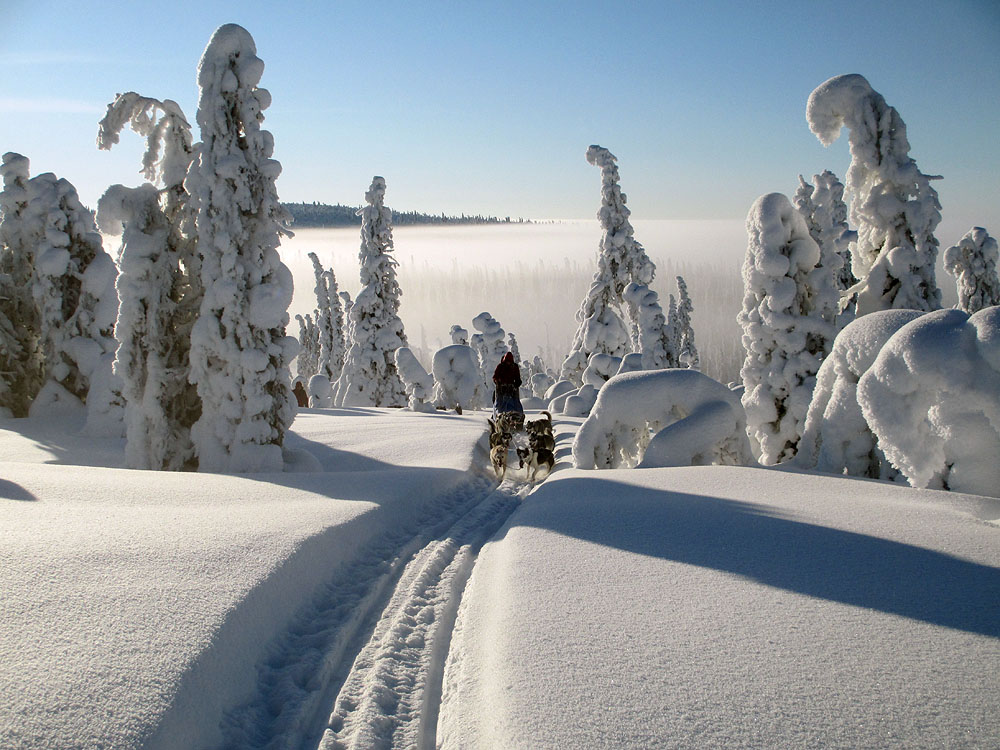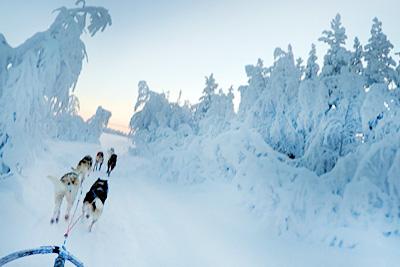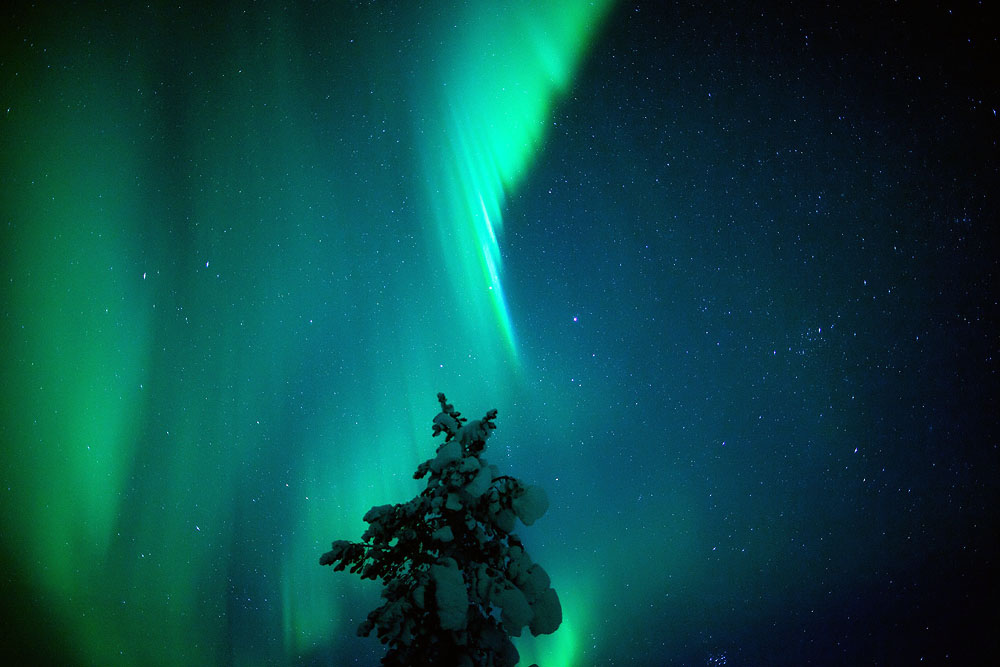Dog Sled TOURS IN Ontario: YOUR HUSKY TRIP Near Toronto and Algonquin
Dog Sledding Ontario
"Yours to discover" is a motto for Ontario because, despite the big cities and tourism, there is still untouched nature to explore. Huskies are waiting to go for a run and take you on an adventure through the wilderness. More about dog sledding in Ontario
History of dog sledding in Ontario
Aboriginal tribes lived in Ontario for 8,000 years before European explorers came to North America in the 1500s. The aboriginal people mainly survived by hunting, trapping, and fishing. Inuits in the northern more arctic region of Ontario raised dogs to be pack dogs in the summer and pull sleds in the winter. Ontario Abenaki tribes tell ancient stories of dogs and how they were important members of the family. In the late 1700s when European settlements were being established by fur traders and prospectors, the aboriginal people worked with them in trading and taught settlers their ways of dog sledding and its usefulness. When snowmobiles and roads for automobiles were introduced, the purpose of dog sledding changed. Dog teams were no longer needed for everyday winter transport, but were used for recreation and sport. Luckily in Ontario, there is a high demand for recreational dog sledding and racing. The rare breeds of sled dogs are well kept and still have a valuable purpose in the region’s economy and way of life. The Ontario Federation of Sled Dog Sports supports dog powered races across Ontario. The most exciting and biggest races are under OFSS supervision.
Important racing event
Marmora SnoFest is a 37-year-old celebration of dog sledding in Marmora, Ontario. In 2015, a purse of $3,500 was available to race winners. The longest race is 10 miles for 6 dog teams. The shortest race is 2 miles and is for skijoring (whereby contestants are pulled on skis as opposed to sleds). Apart from dog sled races, they also have activities such as talent shows, weight pulls, and sled dog rides that are fun for all visitors. Cannington Dog Sled Races and Winter Festival has been held for 11 years in the old farming town of Cannington, due to its ideal trails, and draws crowds of up to six thousand people. The purse for the races in 2015 was $10,000. Skijoiring, 4 dog, and 6 dog racing events are highlights each year. The festival also has aboriginal shows and ice sculpting competitions.
Haliburton Highlands Dogsled Derby is an action-packed weekend in Haliburton, Ontario — in the southwest of Algonquin Park. The racing trails really showcase the captivating natural beauty of the area. Racing for a share of a large purse, mushers can compete in skijoring, 4 dog and 6 dog teams, as well as novice, youth and the "kid and mutt races". The kid and mutt races are the most popular and draw the largest crowd.
Kearney Dog Sled Races have been running since 1994 on the western border of Algonquin Park. These races are fun for visitors and exciting for mushers and teams. The trails lead through forests, marshes, and some uphill segments. The sights are beautiful and the races are thrilling!
Dog Sledding Ontario: General information
With cities like Toronto and Ottawa, Ontario has the largest population of all the Canadian provinces, but with 94% of Ontario’s population based in the south. This means that within a two-hour drive one can find themselves surrounded by nature and not skyscrapers. This is a charming fact and ideal for tourists who want both a city and wilderness trip. Ontario’s land space is 415,598 square miles (1,076,395 square kilometers) and most is boreal forest. Also characteristic for Ontario, are the lakes, rivers, and streams that can be found from the north to the south. The province is bordered by Hudson Bay and the Great Lakes. Ontario has no mountain chains, only high uplands that reach 2,274 feet (693 meters) above sea level. Without any major mountains Ontario is open to Arctic air masses, so in northern Ontario, winters are extremely cold with temperatures down to -40 °C. Large accumulations of snow stay on the ground for over half the year, with Southern and Central Ontario receiving 40-70 inches (101-178 centimeters) of snow per year, due to being located in a snowbelt because of the Great Lakes. Mushers know that this kind of snowfall is ideal for husky tours. Ontario has seven National Parks and over 80 provincial parks and protected areas. These beautiful areas are preserved and offer visitors sights of nature in it’s purest form.




